“Let there be light” . . . and there was, lots of it, radiating from nearly 15,000 large public menorahs in nearly every major city and tiny island around the world, instituted and supported by Chabad-Lubavitch emissaries.
But perhaps nowhere was the light seen by as many different types of audiences as in Washington, D.C., where a daily roster of holiday activities brightened the days and nights of political movers and shakers, diplomats and dignitaries, visitors and local residents, young adults and children, and the innumerable people who got a glimpse of some of the festivities on television, computer or via their smartphones.
It started with a bang on the first night of Chanukah with the official national menorah-lighting ceremony—“Chanukah on the Ellipse,” across from the White House—on Nov. 27, the day before Thanksgiving. Most of the nearly 3,000 ticket-holders of all ages filled the seats or stood for the outdoor festivities—no mean feat considering the damp weather.
“This is one mitzvah in the Torah that actually requires publicity for it to be fulfilled,” said Rabbi Levi Shemtov, executive vice president, American Friends of Lubavitch (Chabad). “We are absolutely delighted that so many factors lined up this way, enabling us to do that in an unprecedented manner.”
The event turned out to be the most widely viewed Chanukah celebration in the world, seen by more than 70 million people, according to independent news monitoring services. That number does not include television viewers on international stations, estimated at another 70 million or more, according to American Friends of Lubavitch (Chabad).
The national menorah-lighting was covered by all major television outlets, including ABC, NBC, CBS, Fox and CNN, in addition to the Associated Press and Reuters.
The program itself proved varied and vibrant.
Where else could you hear the United States Air Force Band; Grammy Award violinist Miri Ben-Ari; “The Three Cantors” (Cantor Benny Rogosnitzky of New York’s Park East Synagogue; Cantor Shimon Miller of Young Israel in Margate, N.J.; and Cantor Schneur Zalman Baumgarten of Moscow’s Marina Roscha Synagogue, led by musical director Cantor Jeff Nadel); and special greetings from President Barack Obama and a member of his Cabinet, U.S. Trade Representative the Hon. Michael Froman; accompanied by a live dancing dreidel and watched over by Judah Maccabee-like guards standing by, in full red-and-gold regalia?

Then there was that image—the huge arm of a silver crane—to light that first candle on the world’s largest menorah, going up and then coming down slowly, majestically almost, with the Chanukah song “Maoz Tzur” chanted in the background by the cantors and accompanied by the band. Froman lit the candle, joined in the utility bucket by Shemtov and his father, Rabbi Abraham Shemtov, chairman of Agudas Chassidei Chabad, the umbrella organization of the Chabad-Lubavitch movement.
Through its National Menorah Council, American Friends of Lubavitch (Chabad) organizes the National Menorah in Washington, D.C., and dispenses logistical support, and other advice, including legal referrals to Chabad-Lubvitch centers around the world.
“In our history, there isn’t just darkness, there’s joy—and we must remember and celebrate that,” said the younger Shemtov at the ceremony.
That’s what the Rebbe—Rabbi Menachem M. Schneerson, of righteous memory—encouraged Chabad emissaries to do: to focus on the light and warmth of Chanukah, and to publicize the miracle. In that regard, there should be public menorah-lightings everywhere, instituted as a strategy, to advertise to the world belief in G‑d, and the miracles of Chanukah and every day.

Something Every Day of the Week
Washington, D.C., had much on the docket. More than a dozen different Chanukah-related events took place for nearly every constituency.
On Dec. 2, there were celebrations for the presidents, provosts and professors at the American University and the George Washington University. That same day, for the first time ever, Gallaudet University—the national institution for the deaf—held an outdoor menorah-lighting for students and professors, during which university president T. Alan Hurwitz signed a powerful Chanukah message, noting his pride at being Jewish. Hundreds came to watch, nearly all of them deaf; the program was webcast live and led by Rabbi Yehoshua Soudakoff.
On Dec. 3, a Chanukah candle-lighting was sponsored by Mayor Vincent C. Gray and the Council of the District of Columbia, where American Friends of Lubavitch (Chabad) joined the Jewish Community Relations Council of Greater Washington. Moments later, the Capitol Jewish Forum, another Chabad program, hosted the 20th annual celebration for staffers and members of Congress. Attendees enjoyed latkes, doughnuts and live music, and left with simple menorah kits to take home and share with friends.

The next day, a celebration dubbed “A World of Light” was held at the Inter-American Development Bank, in cooperation with the World Bank and the International Monetary Fund, for ambassadors, senior diplomats and the international community. IDB President Luis Alberto Moreno welcomed guests, delivered greetings and lit the shamash, the “attendant candle” used to light the others on the menorah.
On Dec. 4, American Friends of Lubavitch (Chabad) dispensed Chanukah materials and sent a rabbi to bolster Chanukah celebrations at the Pentagon and other military locations.
Also on Dec. 4, the koshering and supervision process of the White House kitchen began in preparation for two Chanukah receptions the next day: one in the afternoon and one in the evening. Among the dignitaries at the dinner reception for 1,000 guests invited by the president and his wife, Michelle Obama, were the three sitting Jewish U.S. Supreme Court Justices: Ruth Bader Ginsburg, Elena Kagan and Stephen Breyer. Other celebrities include Harvard professor and attorney Alan Dershowitz; “Seinfeld” co-creator and “Curb Your Enthusiasm” actor/comedian Larry David; and Israeli professional basketball player Omri Casspi of the Houston Rockets.
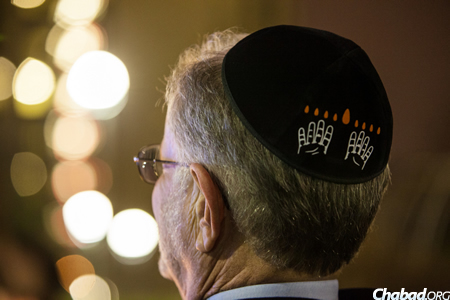
The afternoon reception on Dec. 5 was attended by none other than New Yorker Asher Weintraub, all of 10, who created the now-famous turkey-shaped menorah called the “menurkey”; and Dana Gitell of the Boston area, who with her sister, Deborah, was apparently the first to coin and market the term “Thanksgivukkah.” (Certainly, Thanksgiving had something to do with all the media coverage this year. For the first time since 1918, the holidays converged, and the press ate it up.)
The president spoke of miracles, big and small, noting that this was the fifth Chanukah celebration—all of them kosher—he has held as president. It was also the first time the Obamas hosted two back-to-back Chanukah receptions.

He offered thanks to military families; along those lines, Lainey and Kylie Schmitter, the daughters of Jake Schmitter, who is currently stationed in Afghanistan, lit the Chanukah candles as his wife, Drew, looked on. The menorah used was designed by Holocaust survivor Manfred Anson, who, said President Obama, “like the Maccabees at the center of the Chanukah story, fought against tyranny, serving in the Australian army during World War II. And like the Maccabees, after the war was over, he sought a place where he could live his life and practice his religion free from fear. For Manfred and millions like him, that place was ultimately America.”
While Chanukah is officially over, it has been lingering, especially on both American coasts.
Shemtov noted that Chabad hosted post-Chanukah Shabbat dinners for hundreds of students and young professionals in the nation’s capital because last week they went home for the four-day Thanksgiving weekend break. Over the course of the eight-day holiday, Chanukah materials—such as thousands of menorah kits, holiday guides, latkes and doughnuts—were distributed for use at young professional and student events throughout Washington, D.C.
He also recently received a rather modest request. The Jewish military chaplain at the Walter Reed National Military Medical Center asked if the oversize menorah that Chabad lent them could stay a little longer, as it made patients and their families feel good having it there.
For them and many others, the light has become a bit brighter, and many don’t want it extinguished—not just yet.
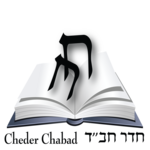



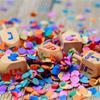
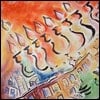
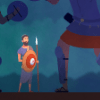
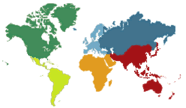

Start a Discussion